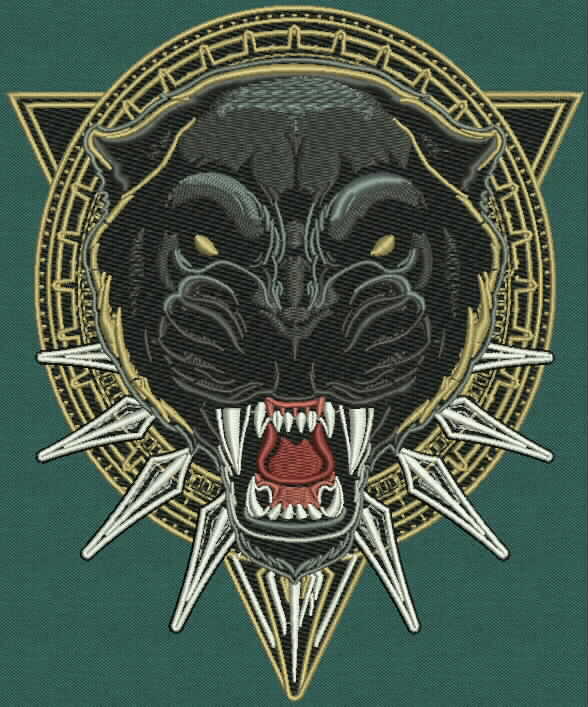Comprehensive Digitizing for Embroidery: From Design to Stitch
Comprehensive Digitizing for Embroidery: From Design to Stitch
Blog Article
Explore Various Kinds Of Needlework Digitizing Strategies
Embroidery digitizing has developed substantially for many years, offering a myriad of methods to bring designs to life in the electronic world. From the elaborate virtuosity of standard hand embroidery digitizing to the accuracy of the boxing method, and the benefit of auto-digitizing software programs, the options are vast. The realm prolongs to extra advanced methods like photorealistic needlework digitizing and the interesting realm of 3D embroidery digitizing. Each method brings an unique set of possibilities and challenges to the table, making the expedition of these approaches an engaging trip for those in the embroidery globe.
Standard Hand Embroidery Digitizing
Conventional hand embroidery digitizing involves the procedure of transforming detailed hand-stitched designs into electronic styles for device needlework. This strategy calls for proficient craftsmens to diligently evaluate the handcrafted layout and after that utilize specialized software program to recreate it in an electronic layout. Each stitch, shade, and detail needs to be very carefully converted to guarantee that the essence of the initial hand embroidery is protected in the electronic version.
Among the essential difficulties of typical hand embroidery digitizing is capturing the ins and outs and subtleties of the handmade layout. Digitizing for Embroidery. Craftsmens have to possess a deep understanding of various needlework methods, such as satin stitch, chain stitch, and French knots, to properly reproduce these methods in the electronic world. Furthermore, they require to have an eager eye for information to make sure that the digital layout preserves the exact same level of artistry and workmanship as the original hand-stitched item
Punching Method
To seamlessly shift from conventional hand needlework digitizing to the punching technique, craftsmens should currently concentrate on transforming the intricate electronic styles into directions that needlework devices can analyze. The punching strategy includes making use of specialized software program to create digital data that have commands for the needlework maker to comply with. This process requires a deep understanding of not simply the design itself yet also the capabilities and limitations of the embroidery equipment.

Auto-Digitizing Software Application Programs
Needlework digitizing has actually been revolutionized by the advent of auto-digitizing software application programs, providing artisans with sophisticated tools to transform electronic designs right into needlework equipment guidelines effectively. Auto-digitizing software program programs utilize formulas to evaluate electronic images or vector documents and produce embroidery styles immediately. These programs allow for quick and exact conversion of elaborate designs right into stitch patterns, saving time and initiative for embroiderers.
Among the key benefits of auto-digitizing software is its easy to use interface, making it available to both novices and experienced digitizers. These programs typically include attributes such as stitch modifying tools, thread color matching, and the capability to preview the final stitched layout. In addition, auto-digitizing software can deal with complicated styles with multiple colors and intricate details, creating top quality embroidery files ideal for numerous garments and fabric tasks.
While auto-digitizing software application uses ease and effectiveness, it is essential for users to recognize the limitations of check this site out automated digitizing. Fine-tuning and hands-on modifications might still be required to accomplish the preferred needlework quality, specifically when managing elaborate or special styles. By leveraging the abilities of auto-digitizing software application along with manual digitizing techniques, artisans can boost their needlework digitizing process and create stunning embroidered items.
Photorealistic Needlework Digitizing
Utilizing advanced electronic imaging methods, achieving photorealistic results in needlework digitizing has become a popular skill amongst contemporary artisans. This method includes transforming high-resolution images into detailed stitch patterns that very closely resemble the initial design, causing embroidery items that display natural detail and depth.
To accomplish photorealistic embroidery digitizing, craftsmens have to have a keen eye for official statement information and a detailed understanding of exactly how different stitch kinds and thickness can impact the last outcome. By carefully drawing up each shade and shade in the image, embroiderers can develop an electronic file that overviews the needlework maker to replicate the subtleties of the original image properly.
Photorealistic needlework digitizing is specifically prominent in creating custom-made designs for garments, home decoration, and art items where recording the essence of a photograph or artwork is important. This technique permits artisans to change memories, landscapes, pictures, and complex artwork into magnificent stitched masterpieces that display a blend of conventional workmanship and innovative technology.
3D Needlework Digitizing
With the advancement of electronic imaging strategies in attaining photorealistic lead to embroidery digitizing, the expedition of 'D Needlework Digitizing' offers a new measurement to the details of design duplication. 'D Needlework Digitizing' describes the three-dimensional digitizing strategy that includes deepness and structure to embroidery designs, producing an extra reasonable and visually attractive final item. This method utilizes software that imitates the impact of light and shadow on the needlework design, boosting its general visual impact.
One of the key advantages of 'D Embroidery Digitizing' is its capacity to make designs look even more realistic and dynamic. By adding deepness to from this source the embroidery style, the end product shows up more realistic and exciting (Digitizing for Embroidery). Furthermore, this method enables for even more creative flexibility in design implementation, allowing embroiderers to explore various textures and results that were previously testing to accomplish
Conclusion

Report this page